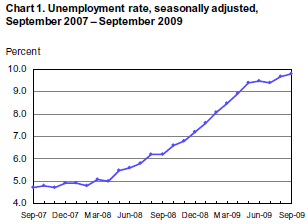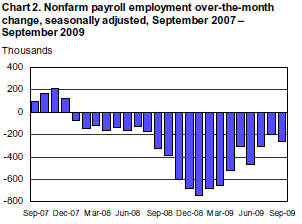The potential for articulating smart contracts between local business entities using the Block Chain Protocol (BCP) is truly staggering. While the BCP may not be ready for general population and would be largely unnecessary within a corporation, certain contract types and certain business structures may offer an excellent environment for widespread development.
Cooperative businesses (Co-ops) may be the “more able” organization structure to introduce smart contracts because of specialized governance that allows for the pre-sale of goods and services for the purpose of general financing. The pre-sale agreement may take the form of products, services, cash, or shares of future production. For the purpose of this discussion, let’s consider “shares” as a community commercial currency between co-ops.
Community Currency
The objective would be to circulate shares between co-ops as widespread and comprehensively as possible only converting back to dollars when necessary. The incentive would be that shares, in many cases, may be exchanged tax-free as long as certain conditions are met. Further, by eliminating transaction costs, speed and efficiency may be achieved without banks or double entry account reconciliation, until necessary for interacting with the end user.
Most people are familiar with Electronic Data Interchange (EDI) contracts from observing services such as Amazon.com, WalMart, or Zappos.com. Electronic Data Exchange can be formally defined as the transfer of structured data, by agreed message standards, from one computer system to another without human intervention. Companies have used EDI since the mid-1990s to execute orders, renew inventory, warehousing, tracking, and even merchant banking. The EDI acts primarily within the structure of the corporation and their contracted suppliers.
The trick now, would be to use EDI protocols outside the construct of the corporation. The Block Chain protocol provides an important set of tools, which may allow organizations to interact with each other in a secure form of EDI that can be articulated among a community of integrated cooperatives.
The 3 Building Blocks of Smart Contracts
There are 3 basic types of contract protocols that may be deployed through the Block Chain; these form the basis of smart contracts:
- “Self-enforcing” protocol, which is like an electronic P2P handshake agreement that is fully activated between two parties.
- “Mediated” contract that would include a third part intermediary such as an escrow or an oracle that would verify compliance with the agreement and pass the transaction between parties (or not).
- “Adjudicated contract” which places the oracle either in front of or behind the electronic handshake to filter or check transactions based on certain conditions.
An example given by Nick Szabo (reference article) would be that of, say, keys to an automobile where the owner could selectively allow access to family members but exclude other third parties. There would be a backdoor to let in a creditor that is algorithmically switched on upon non-payment during a specific time (for repossession), or permanently switched off after the final payment is cleared.
The 3 Fundamental Particles of Cryptography:
Cryptographic keys that act in a variety of ways may activate each of these smart contract protocols.
- “Secret key” encryption, which is loosely analogous to common passwords that most people use.
- “Public key” encryption device acts like a one-way trap door that moves an agreement in only one direction.
- “— bit key generators” create keys that unlock transactions after a task is completed.
Controls:
In order to duplicate the controls that large corporations hold over EDI processes, smart contract protocols should be structured in such a way as to make agreements:
- Robust against naive vandalism such as accounting errors,
- Robust against sophisticated, rational attack such as intentional fraud.
Cooperatives are quite adept at deciding how “shares” (thus, smart contracts) are activated using different types of authentication devices such as digital stamp, public signature, blind signatures, etc. Likewise, “Privy Authentication” means that certain persons have the privilege of interacting with the contract. Additionally, quorum control refers to a condition where a group of people may interact with the contract by election, threshold (like a kickstarter) or almost any quantitative function such as algorithm or time function.
Common electronic contracts (EDI’s) include the following (1):
Administrative functions:
- Product code and price catalogs
- Catalog updates
- Forecasts and plans
- Deals and promotions
- Statements
Pre-purchasing:
- Requests for quote (& response)
- Inventory inquiry/advice Purchasing
- Purchase order & acknowledgment
- Purchase order change & acknowledgment of change
- Material release
- Point of sale/inventory on hand Shipping and Receiving
- Shipment status inquiry & response
- Advance shipment notification
- Bill of Lading
- Freight bill Warehouse
- Inventory inquiry & status
- Shipping notice
- Receipt confirmation
- Shipment order
- Shipment confirmation
Customs
- Declaration
- Release Billing and Paying
- Invoice
- Payment remittance
- Credit and debit memos
- Receipts
Conclusion:
The Boogie man of the Co-op movement is Big Box Corporate America such as WalMart and their digital siblings such as Amazon who provide consumption value often at the cost of community resilience. Corporations have the resources to automate internal processes, suppliers, and labor. Co-operatives, and localized producers in general, are at a severe disadvantage every time they must cross the transaction gap. Large corporations can easily trade value within their systems paying taxes only when necessary.
The knowledge and technology exists today for Cooperatives to accomplish the same thing using smart contracts and the Block Chain protocol. To do so would create similar economies of scale with the added benefit of improving the distribution of wealth, manufacturing social capital, and storing value in resilient communities. Further, crypto-currencies in general still suffer from that fatal flaw where they are not backed by any form of productivity. To give the crypto-currencies a place to store value backed by community productivity would benefit all who anticipate such technologies.
Primary reference for this article is from: Formalizing and Securing Relationships on Public Networks – Nick Szabo


